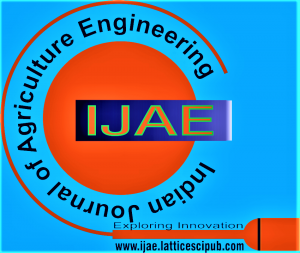![]()
On-farm Evaluation and Selection of Manually Operated Honey Extractor
Bayissa Tarecha1, Keneni Kebede2
1Bayissa Tarecha, Department of Agricultural Engineering, Oromia Agricultural Research Institute, Addis Ababa, Ethiopia.
2Keneni Kebede, Department of Agricultural Engineering, Oromia Agricultural Research Institute, Addis Ababa, Ethiopia.
Manuscript received on 10 May 2024 | Revised Manuscript received on 14 May 2024 | Manuscript Accepted on 15 May 2024 | Manuscript published on 30 June 2024 | PP: 19-21 | Volume-4 Issue-1 May 2024 | Retrieval Number: 100.1/ijae.B151904021124 | DOI: 10.54105/ijae.B1519.04010524
Open Access | Ethics and Policies | Cite | Zenodo | OJS | Indexing and Abstracting
© The Authors. Published by Lattice Science Publication (LSP). This is an open-access article under the CC-BY-NC-ND license (http://creativecommons.org/licenses/by-nc-nd/4.0/)
Abstract: In the study area, honey is extracted using traditional methods, which leads the product to degradation in nutritional quality and quantity. As a result of this, honey extracted traditionally does not meet international market standards; to minimize this problem several honey extractors are available, but the problem of cost, maintenance place, and durability were the main issues for the farmers. Therefore, the main objective of this research work is to collect and evaluate the performance of available honey extractors and to select a better-performed model. Data like time of extraction (min), mass of honeycomb before and after extraction (kg), and mass of extracted Honey (kg) were collected. Losses (kg), Extraction efficiency (%), and Extraction capacity (kg/hr) were calculated. Simple descriptive statistics were used to analyze data. Accordingly, the mean extraction capacity was 68.28, 62.88, and 56.76 kg/hr, and the mean extraction efficiency was 71.39, 65.83 and 60.31 % for the Imported, Jimma Agricultural Engineering Research Center and Fadis Agricultural Research Center models, respectively. As depicted from the results all extractors have good performance. However, the Jimma Agricultural Engineering Research Center model will be recommended for small-scale holders based on its price, maintenance availability, spare parts, simplicity, and durability.
Keywords: Evaluation, On-Farm, Manually Operated, and Selection.
Scope of the Article: Agriculture Technology
